Matador Network's Blog, page 1106
May 1, 2019
Box Jellyfish sting antidote

The world’s most venomous creature just got a little bit less dangerous, thanks to researchers at the University of Sydney who have found an antidote for the sting of the Australian box jellyfish. The jellyfish has enough venom to kill over 60 people with a single sting, causing pain, skin necrosis, and, in serious cases, cardiac arrest and death with just a few minutes. Now, however, researchers have found a molecular antidote that blocks the sting’s symptoms if applied within 15 minutes.
The cure was discovered by pain researchers at the University of Syndey’s Charles Perkins Center using genome editing. To create the antidote, the researchers took millions of human cells and knocked out a different human gene in each before adding jellyfish venom and looking for cells that survived. The antidote is believed to stop necrosis, skin scarring, and alleviate all pain though further research is required to determine whether it will actually prevent a heart attack. Before being tested on live mice, the antidote was proven to work on human cells outside the body.
According to the study’s lead author, Raymond Lau, “It’s the first molecular dissection of how this type of venom works, and possibly how any venom works.” 
H/T: The Guardian

More like this: 5 places with the most dangerous animals in the world (that aren’t Australia)
The post Researchers have developed an antidote for the world’s most venomous jellyfish appeared first on Matador Network.

No-selfies woman posts ‘dead' photos

Selfies have taken over social media, but even the most pro-selfie proponents would probably admit that, ultimately, selfies aren’t exactly a good thing. Even with this tacit understanding, many of us will simply go on extending our arms, nailing the perfect smile, and snapping 50 photos of ourselves that we will later scrutinize for hours, before choosing one to post on Instagram. One woman, however, decided that she would rather die than take a selfie, and she’s putting her camera where her mouth is.
View this post on InstagramA post shared by STEFDIES (@stefdies) on Feb 6, 2018 at 2:18am PST
Stephanie Leigh Rose created a website and Instagram account called “Stefdies” as part of her anti-selfie campaign. According to her website, each photo she takes “strives to get back to the roots of what a photograph was intended to be — a captured moment in time. Her pictures, usually taken in front of beautiful backdrops, don’t showcase the perfect angle and smile, but instead her “lifeless” body lying flat on the ground.
View this post on InstagramA post shared by STEFDIES (@stefdies) on Jun 30, 2018 at 8:59am PDT
She explains on her website that the photo series is intended to provoke discussion on “mortality, the function of photography, and stirs the imagination. Nothing is premeditated or prepared in these photographs, the shot is captured in the moment as it occurs… that is the beauty of this series, each photo is just a blip in a day. Nothing less, nothing more. It’s the truest sense of what I believe photographs should be — tangible physical proof that ‘I was here.’”
And yes, the photo series is intended to prove a point, but it’s also pretty hilarious. 
View this post on InstagramA post shared by STEFDIES (@stefdies) on Apr 27, 2019 at 9:47am PDT
View this post on InstagramA post shared by STEFDIES (@stefdies) on May 22, 2017 at 5:10am PDT
View this post on InstagramA post shared by STEFDIES (@stefdies) on Jun 24, 2017 at 6:00am PDT
H/T: Petty Mayonnaise

More like this: The ugly truth behind all those lion cub selfies on Instagram
The post Woman posts photos of herself ‘dead all around the world’ for anti-selfie campaign appeared first on Matador Network.

Royal family residences in the UK
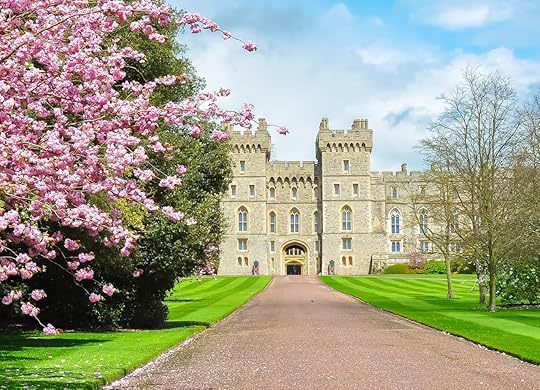
There’s a lot to keep track of in the British royal family. Within the last few years, they’ve had their fair share of scandals and happy events; there have been several grand weddings, a few new family additions, and some record breaking — Queen Elizabeth II became the longest reigning monarch in 2015. The royal family is a large one, and its members are all spread out over different royal residences within the UK — many of which can be seen in films and television, like Netflix’s The Crown.
Whether you are obsessed or indifferent about the House of Windsor’s tribulations, the residences are worthy sights in their own right. From the original main residence in London to an official one up in Scotland, here are some royal residences worth tacking onto your British itinerary.
1. Buckingham Palace
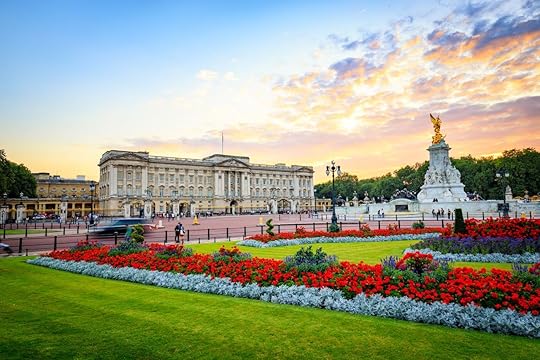
Photo: Lukasz Pajor/Shutterstock
Built in the early 1700s, Buckingham Palace didn’t become the official residence of the British monarchy in London until 1837. While its primary function is as the main location for administrative duties, such as official events and meetings, it’s also where Queen Elizabeth II calls home and spends the majority of her time (when she’s in the Union Jack floats atop the roof). Of the 775 total rooms — which include 19 state rooms, 52 royal and guest bedrooms, 188 staff bedrooms, 92 offices, and 78 bathrooms — there are only three areas that visitors can access — and only during specific times. Inside the palace itself, visitors can only tour the state rooms during 10 weeks in the summer and a few selected dates in winter and spring.
On the grounds of the palace is the Royal Mews. When Buckingham Palace was made to be the main royal residence, all of the stables at the King’s Mews (present-day Trafalgar Square) were moved over to the Royal Mews’ current location, and the old space was demolished. In addition to actual horses, gorgeous carriages and coaches are on display — some of which, like the Gold State Coach, are still used to this day. It’s open from November to February each year.
The third location, also on the grounds, open to visitors is the Queen’s Gallery. A public art gallery opened in 1962, it displays different works from the Royal Collection on a rotating basis. The Queen’s gallery is open year-round.
2. St. James’s Palace

Photo: asiastock/Shutterstock
Before there was Buckingham Palace, there was St. James’s Palace. It’s the oldest royal residence in the entire United Kingdom, with most of its construction taking place in the 1530s under Henry VIII. When the Palace of Whitehall was destroyed in a fire, the royal family moved its main residence to St. James’s. When Buckingham Palace was built, the older palace began being used less and less, mostly for formal occasions. William IV, the king before Queen Victoria, was the last monarch to use St. James’s, and it was Victoria who made the move to Buckingham as the main residence official.
Today, St. James’s Palace is still in use as the London residence for some members of the royal family like Princesses Beatrice and Eugenie, as well as the meeting place for the Accession Council. Several offices, such as that of the Royal Collection Trust and officials within the royal household, are there as well. Unfortunately, it’s not open to the public — but because it’s in London, stopping by to take a quick look and photo of the front and surrounding area is easily done.
3. Clarence House
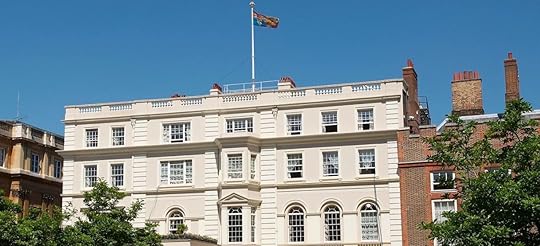
Photo: Royal Collection Trust
Right next to St. James’s Palace is Clarence House, built in the late 1820s. Its walls have seen several generations of the royal family take up residence there, including the Queen Mother Elizabeth, as well as Queen Elizabeth II and Prince Philip, and the interior design is frequently remodeled to the tastes of its current occupants of the time. Currently, it’s the official London residence of Prince Charles and Camilla. It’s only open during the month of August each year, but in 2019, it’s closed for maintenance. Once it does open up to the public however, visitors will be taken on a guided tour of five rooms and adjoining spaces on the ground floor. Tickets for August 2020 will go on sale this November.
4. Kensington Palace
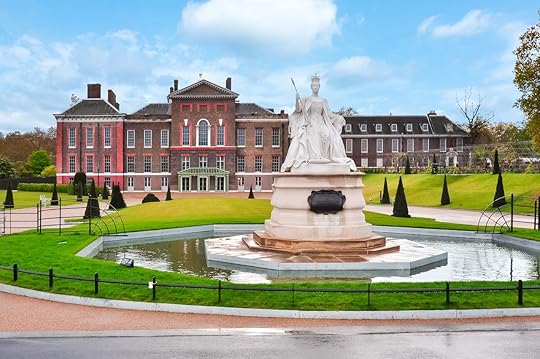
Photo: Mistervlad/Shutterstock
Though it was built in the early 15th century, Kensington Palace didn’t pass into the hands of the royal family until 1689. It was the birthplace and childhood home of Queen Victoria, though she never went back to Kensington after she ascended to the throne and moved the official royal residence to Buckingham Palace. As of late, it’s the home to Prince William, Kate, and their children. Prince Harry and Meghan also lived there, but recently moved to the Frogmore Estate in Windsor in anticipation of their baby’s birth.
Kensington Palace is one of the more accessible palaces, and visitors are allowed to see more there than any other London residence. Open to the public year-round, visitors can take their time walking through the opulent rooms of the king and queen’s state apartments, as well as the lush gardens out back. In addition to touring the palace’s rooms, there are also permanent and rotating exhibits that sometimes display surviving artifacts of past royals, such as the current one on Queen Victoria that examines how she balanced being queen with being a wife and mother, and the one taking a look into Princess Diana’s style.
5. Frogmore House

Photo: Royal Collection Trust
Part of the expansive Frogmore Estate, Frogmore House gets its name from the abundance of frogs living in the area. Construction of the house was completed in 1684 and the estate itself was purchased and leased out by Henry VIII. In 1792, Queen Charlotte, wife of George III, bought the lease because she wanted a country retreat for herself and her family. In 2018, Prince Harry and Meghan held their wedding reception at Frogmore House, and they’ve just recently moved into the nearby and newly renovated Frogmore Cottage.
Frogmore House is only open on three days annually, so visiting this one will take some careful planning. The three days are designated as charity open days, when all proceeds are donated to specific charities. This year’s dates are May 28-30, and tickets can be purchased on the charities’ websites. The charities are the National Garden Scheme, the British Heart Foundation, and the National Rheumatoid Arthritis Society. Dates are typically released in April, with the event taking place in either May or June. If you’ve got a group of 15 people or more, however, you’re able to pre-book a visit to Frogmore House for August.
Scoring a ticket means you’ll be able to tour the inside of the house, where you’ll see how Queen Charlotte incorporated her love of botany into its interior design, pass through important rooms, and take a look at original paintings her family created — one of the many interests they pursued as part of their refuge from court. Also included is a visit to the gardens, with lakes, bridges, and tons of greenery.
6. Windsor Castle
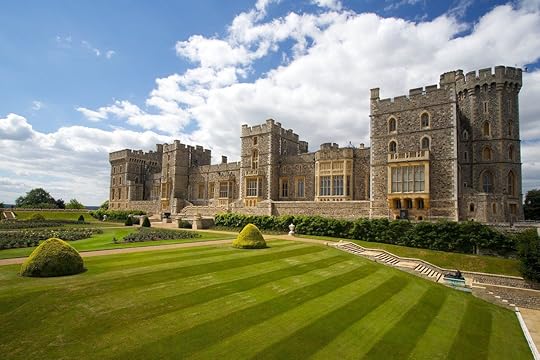
Photo: sloukam/Shutterstock
The largest occupied castle in the world, Windsor Castle is one of the more important royal residences in the UK. The original castle was built in the 11th century and founded by William the Conqueror as a way to solidify Norman power after their invasion. Several monarchs throughout the following years rebuilt, remodeled, and renovated the main palace and other buildings within the walls. Windsor Castle is still very much in use today, both by royals and the public. Queen Elizabeth herself uses the castle frequently, spending most of her private time on weekends there. Between March and April, the queen sets up official residence at Windsor, known as Easter Court, when she hosts events, holds meetings, and presides over ceremonies; during June, the Queen is there for a week to attend the Order of the Garter and Royal Ascot race meeting.
Visitors can easily spend a few hours wandering the entirety of Windsor Castle. Within the castle itself, they’ll be able to walk through the state apartments, semi-state rooms, and the moat room. While it’s currently closed for redevelopment (but will reopen in the future), there’s also a room that has Queen Mary’s dollhouse on display. At three feet tall, the intricately designed dollhouse will put all others to shame.
Also on its grounds is St. George’s Chapel, which has been used for several different services, ranging from weddings to funerals. Recently, Prince Harry and Meghan had their wedding there. The Gothic architecture and decor (think stained-glass windows) come together to form what’s one of the most beautiful chapels to date. Buried within the church are a number of well-known royals, such as Henry VIII and George VI.
Windsor Castle is one of the more popular places among tourists, so booking tickets online in advance is highly recommended. Its popularity coupled with the fact that it’s open all year means it’s going to be busy no matter what, though the official website recommends visiting midday as morning is the busiest time of day.
7. Palace of Holyroodhouse
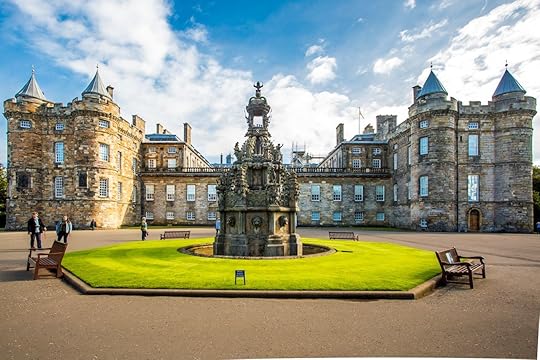
Photo: Aeypix/Shutterstock
Whenever Queen Elizabeth II heads up north, she stays at her official residence in Edinburgh — she does visit the Scottish capital every year around the end of June to early July. Nicknamed Holyrood Palace, the palace was originally built to be a monastery in 1128. Instead of taking up residence on at the solemn Edinburgh Castle, monarchs preferred Holyroodhouse for its green space. One of the more notable residents is Mary, Queen of Scots, and visitors will be able to walk through the rooms where she spent most of her life, as well as some of her personal effects.
A tour will provide a look at the state apartments, including the throne room and privy chamber where Queen Elizabeth II hosts meetings during Holyrood Week; Mary, Queen of Scots’ chambers, such as her bedchamber, outer chamber, and supper room, where she saw her private secretary murdered; the Great Gallery, used as an audience chamber and space for extravagant parties; the ruins of Holyrood Abbey; and the gardens.
In addition, there are also rotating exhibits that provide a look into history, both modern and otherwise. One of the exhibits on right now displays the outfits seen at Harry and Meghan’s wedding. 

More like this: These 7 palaces in Moscow are straight out of a fairy tale
The post All the British royal family’s residences that you need to check out appeared first on Matador Network.

Outdoor activities for Mother's Day

Mother’s Day is around the corner. You could take your mother out for an eggs Benedict brunch for the sixth year in a row. Or you could show mom you put some real thought into her special day this year and surprise her with a more memorable activity. The best way to do that is to take your mom outside. If she’s full of energy and active, you could go hiking. For an older parent, there are still plenty of ways to enjoy the outdoors that are a break from the usual Mom’s Day routine. Here’s how to get outside this Mother’s Day.
1. Bring your mom to the flowers.

Photo: Sean Xu/Shutterstock
Mother’s day and flowers just go together. Rather than bringing your mom a bouquet of snipped tulips, though, you can take her to the flowers. Botanical gardens are ablaze in showy blooms in May, and you’ll find them across the US and the world. If you’re in a big city — be it Dallas or Denver, Seattle or St. Louis — you’re sure to have a botanical garden nearby. Even smaller cities like Pasadena or Peoria have lovely botanical gardens.
Roses start to bloom in mid-spring, and you’ll find stunning rose gardens from Berkeley, California, to Columbus, Ohio. If your mom lives in a more rural area, take her for a drive to check out the spring wildflowers.
2. Go for a hike.

Photo: Monkey Business Images/Shutterstock
Your mom will appreciate the chance to get some fresh air and exercise. If you’re a bigger group taking mom out for her special day — and, say, there are grandkids in tow — the little ones will appreciate running around much more than they’d like sitting in a restaurant. You could head out to a state park nearby, but you usually don’t need to drive too far to find a great place to place for a short trek. Most urban areas have great hikes nearby.
3. Walk under trees.

Photo: Halfpoint/Shutterstock
There’s something magical about trees. The image of walking with mom under blooming dogwoods warms our hearts, at least. Washington, DC, has the National Arboretum, but you’ll also find arboretums in towns and college campuses all over the country — from Oregon to Maine. You can also find trees — and benches on which to sit down and listen to the birds nesting within them — in your local city park.
4. Picnic in the park.

Photo: wavebreakmedia/Shutterstock
This can be very easy to put together. Head to the market to pick up a roast chicken, some salads, and a baguette. A bottle of Prosecco adds a little extravagance. Along with plates, cups, and serving ware, a nice picnic blanket is the finishing touch. Then pick up mom on Mother’s Day and take her to the park. In most places, the weather is perfect in mid-May from an al fresco lunch that your mom will cherish.
5. Ride bicycles.

Photo: Monkey Business Images/Shutterstock
No one forgets how to ride a bike. If you get away from big city traffic, rent bicycles and go for a ride. If you can get a comfy beach cruiser type of bike with more upright handlebars, even better. Plan a route that takes you alongside a body of water or through a major city park. If you have baskets on your bike, throw in the above picnic items and combine your bike tour with an outdoor lunch somewhere lovely.
6. Set out on the water.

Photo: Jacob Lund/Shutterstock
After flowers and trees, there’s nothing like water to calm the mind and create a relaxing Mother’s Day mood. If you live near a beach or lake, go for a walk on the shore. If she’s up for it, you can even rent a canoe and take your mom out. Big city parks often have paddle boats you can take out for a while. Or plan an outing that involves a ferry ride across a lake or bay.
7. Go for a scenic drive.
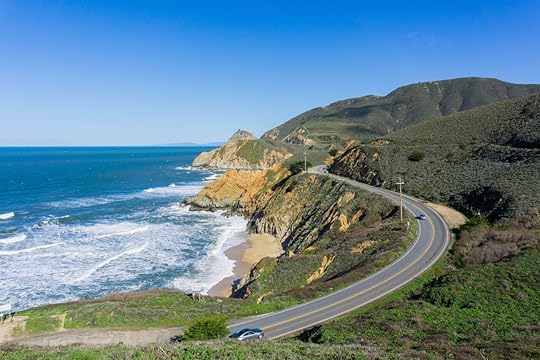
Photo: Sundry Photography/Shutterstock
If your mom would rather not ride a bike or get into a boat, take her for a drive. Go on a daylong road trip to a stunning outdoor destination she hasn’t been to in years. You could get ambitious and head towards a national park. But for this one, we recommend just finding a beautiful view.
If you’re in San Francisco, you could drive south along Highway One. If you’re in Phoenix, take her on the Apache Trail Scenic Drive. If you’re in Richmond, Virginia, head out to the Blue Ridge Parkway. Even if you don’t live near some of the country’s most famous scenic roads, a drive along rolling hills, up a mountain, or to a pretty lake is sure to make her happy. Stop often to take pictures; you can get one of the images framed and give it to her later. It’ll be the best (belated) Mother’s Day gift ever. 

More like this: What children can teach their parents through travel
The post Take your mom outside this Mother’s Day appeared first on Matador Network.

April 30, 2019
Gilded Age mansions in Florida
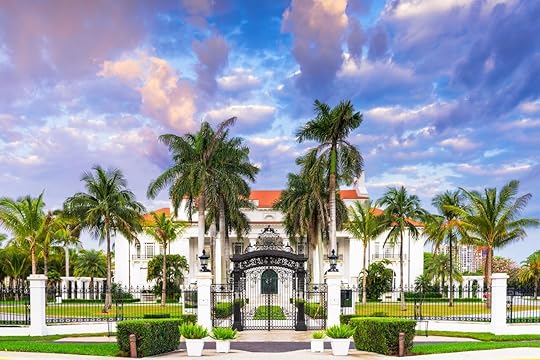
Florida generally gives about as much regard to its history as its people do to common sense. That said, though the state has bulldozed much of its past for condos, some of the grandest structures ever built in America still remain there. Even before the advent of air conditioning, Florida was a popular winter retreat for wealthy northerners, particularly during the period between the Civil War and the Great Depression, much of which is known as the “Gilded Age.”
During this time, grand palaces throughout the Sunshine State popped up, from luxury hotels along the beaches to mansions on sprawling orange groves. A handful are still in operation, like the Biltmore, Breakers, and Boca Raton Resort hotels. But most are now museums or parks that give you a glimpse into the early days of Florida luxury. Visiting them is as much a lesson in Florida history as it is a study of century-old opulence. And all are worth a visit when your sunburn is too bad for another beach day.
1. Vizcaya — Miami
When Midwestern socialite James Deering was diagnosed with pernicious anemia and prescribed sunshine and warm weather, he abandoned his mansion on Chicago’s Lakeshore Drive during colder months and built this palace on Biscayne Bay. The Italian-style villa was constructed between 1914 and 1922, and it features 34 rooms, including nine guest suites. Each suite looks out onto the home’s central courtyard, Vizcaya’s social hub, which originally had open air.
The grand Mediterranean architecture and luxe original furniture (Deering traveled to Europe during construction to gather Louis XV and Chinoiserie pieces, among others) add layers of sophistication to this home, but the gardens are by far its crown jewel. On pleasant winter Miami days, you can stroll the French-inspired hedge maze or the Italian walled garden, marveling at the fountains, perfect hedges, and gazebos that leave you feeling a world away from downtown, which is only a mile north.
2. Ponce de Leon Hotel (Flagler College) — St. Augustine
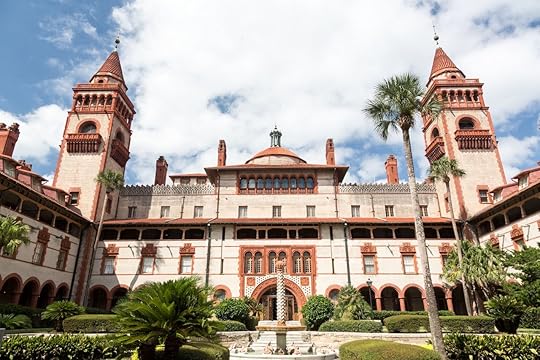
Photo: Steve Heap/Shutterstock
After conquering the oil world by co-founding Standard Oil with John D. Rockefeller, Henry Flagler set his sights on conquering Florida. In addition to effectively opening the state to commerce with his railroad, Flagler also opened a succession of grand luxury hotels luring cold northerners south. The first of these was the Ponce Del Leon, set in Florida’s most historic city: St. Augustine. When it opened in 1888 it was a marvel of the time, featuring electricity in every room and steam-powered heat. Of course, in true Florida fashion, both offered a lot of style and not much substance. Heat in Florida is about as useful as a snowboard, and the electricity used direct current, which often caused lightbulbs to explode. Flagler had to hire staff to turn guests’ electrical switches the explosions scared them so much.
Still, the place was an architectural marvel, with a grand fountain in the center that appears as a sundial from above, a gold-work ceiling, and a main dining room with the largest private collection of Tiffany stained glass in the world. The hotel was the odd Gilded Age luxury resort to make it through the Depression and served as a Coast Guard training center during World War II. In 1968, it became the center of Flagler College, and you can still visit if you find yourself in town.
3. Henry B Plant Museum (Tampa Bay Hotel) — Tampa

Photo: VIAVAL/Shutterstock
Before it had a gleaming modern skyline, Tampa’s most iconic building was the minaret-topped Tampa Bay Hotel. The vision of railroad and steamship magnate Henry Plant, the 511-room, quarter-mile-long hotel was designed as a resting point at the junction of his train and ship empires, where guests could relax after their journeys from the north before boarding a ship to Cuba. The five-level hotel cost $3 million to build in 1891 — about $75 million today — all of which was Plant’s money as investors thought the project’s scope too risky.
During its prime it was a marvel of technology, boasting some of the first elevators in Florida, electricity, and a fully concrete construction. It had suites of up to seven rooms, providing Florida with its most luxurious digs at the turn of the century. When the depression hit, the market for ultra-luxury hotels fizzled, and the University of Tampa moved in in 1933. It still operates the old hotel as a historic museum, complete with the original Victorian-era furnishings.
4. Edison Ford Winter Estates — Ft. Myers

Photo: Artazum/Shutterstock
Imagine, if you will, Jeff Bezos and Bill Gates built houses right next to each other on the Seattle waterfront. That’s effectively what happened on Caloosahatchee River. Thomas Edison, who invented the light bulb, purchased 13 acres along the river in 1886 where he constructed his lavish winter home. The home’s style is more Floridian than other Gilded Age palaces, opting for plantation-style structures with wood sides and wrap-around porches. Edison’s compound also includes a guest house, which once housed luminaries from Harvey Firestone to Herbert Hoover. Plus a caretaker’s house and swimming pool complex that was one of the first residential pools in Florida.
One of Edison’s frequent guests was Henry Ford, who you may recall invented the automobile. Not loving the Detroit winters, Ford also sought a winter escape and was so inspired by Edison’s home he bought the house next door in 1914. The two-story craftsman home isn’t as impressive as Edison’s compound, but it does have a garage with original Fords, and Edison’s Model T is on display at the estates’ museum. You can also walk through 20 acres of tropical gardens, including 1,700 plants from 400 different species.
5. Whitehall (The Henry Morrison Flagler Museum) — Palm Beach
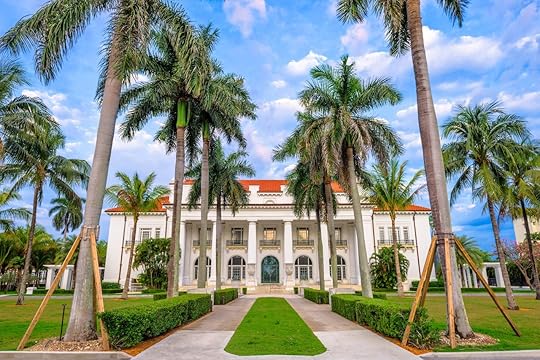
Photo: Sean Pavone/Shutterstock
It seems only appropriate that the tycoon who had the greatest influence on the development of Florida would also have its grandest home. Henry Flagler — the oil and railroad king who expanded the East Coast Railroad south into Florida — built this Palm Beach mansion as a wedding gift to this third wife Mary Lily. It stands like a grand Roman temple on the banks of Lake Worth, with white columns welcoming visitors into a massive main receiving room complete with life-sized portraits of the original owners.
The beaux-arts mansion spans 55 rooms and 60,000 square feet, centered around a golden ballroom on the first level that was the epicenter of early 20th-century winter society. Other rooms all have unique styles from Louis XIV, XV, and XVI to Italian Renaissance and, in one case, obscenely tropical. Though Flagler only spent 11 winters here from 1903-1913 when he passed away, Mary Lily spent four more years here before never returning. Her niece sold Whitehall, which became a hotel with a 12-story tower for a while, then sat in disrepair. In 1959, Flagler’s granddaughter Jean Flagler Matthews created a non-profit foundation to restore the mansion as a historic museum. It’s been one since 1960, complete with Flagler’s private rail car adjacent to the main house.
6. Stetson Mansion — DeLand
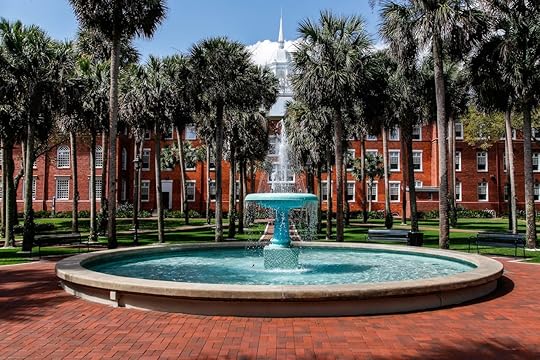
Photo: Michael715/Shutterstock
Known as “The House that Hats Built,” this 9,000-square foot mansion was Florida’s first grand luxury home in 1886. The home of hat magnate John B. Stetson, it once sat on a 300-acre orange grove, and Henry Flagler even built a special rail spur to it so the product could be transported. The High Victorian, three-story structure occupies nearly two acres by itself, with a Polynesian-style schoolhouse next to it, originally built to educate the Stetson children. The home was also among the first in Florida to be fully electric (Stetson was friends with Thomas Edison) and feature pressurized indoor plumbing that brought running water all the way to the third floor.
The house was lost and mostly forgotten about until it underwent a massive restoration project in 2008, creating a private residence that is now occasionally open to the public. The owners of the home allow guests to sit in the furniture, tour the home, and visit the third-floor museum of Stetson artifacts — but only a few days a week and at differing times. Though it’s the rare Gilded Age mansion you’ll actually be able to sit down in, it’s not a formal museum or hotel. Though if you can get here during Christmas it’s one of the grandest holiday attractions in the state.
7. Wesley Mansion — Santa Rosa Beach
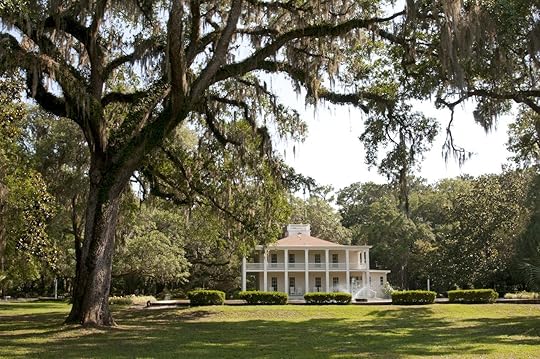
Photo: Peter Titmuss/Shutterstock
Though this two-story Antebellum home nestled in Eden Gardens State Park near Ft. Walton is a masterpiece of restoration, with its original Yellow Heart Pine siding still intact, the interior is far and away its most impressive feature. When Lois Maxon restored the place almost 60 years ago, she filled it with her extensive private collection of Louis XVI furniture, the second-largest collection in the United States.
The house, built by timber magnate William Henry Wesley, still has 95 percent of its original windows, a tribute to the passion behind Maxon’s million-dollar renovation. It’s currently open for public tours and is closed Tuesdays and Wednesdays.
8. Ca d’Zan (The Ringling) — Sarasota
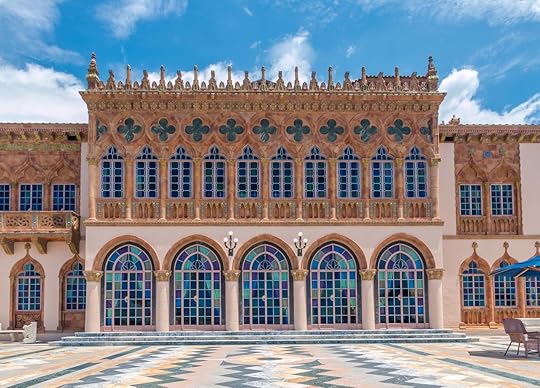
Photo: Irina Mos/Shutterstock
Circus king John Ringling called this lavish estate home for a brief period from 1926 to1936, which spans 36,000 square feet on a three-million-square-foot bayfront lot, built at a cost of $1.5 million. The Venetian Gothic design was inspired by the Ringlings’ travels through Italy, a tribute to the palazzos and canals of Venice, with the still waters of Sarasota Bay their stand-in for the Venetian waterways.
The four-floor palace is filled with Italian Renaissance art and marble, with a sprawling back patio covered in Italian tile. Its grandest feature is the 82-foot tower complete with an observation deck where Ringling allegedly brought guests to marvel at all the land he held in Sarasota. Ringling left the house to the people of Florida, but anyone who watches the news can guess how well a gothic mansion would do in the hands of Florida Man. It was so run down by the late ‘90s it was used as the set for Miss Havisham’s house in the 1996 version of Great Expectations. Fortunately, that low point spurred a $15 million renovation that led to its reopening in 2002.
9. Deering Estate — Cutler Bay
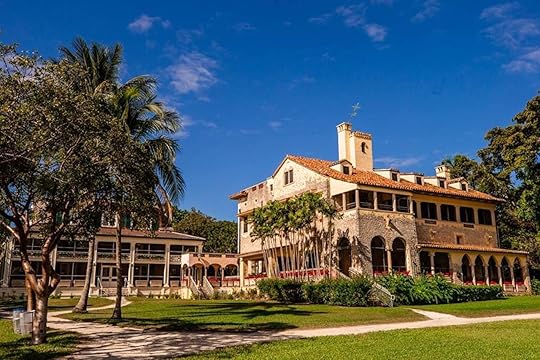
Photo: Deering Estate/Facebook
Not satisfied with just one home in Dade County, John Deering purchased the old Richmond Inn on a rock ridge where the Everglades met Biscayne Bay about halfway between Miami and the Florida Keys. The inn was effectively a business hotel for those coming to do business with Flagler’s new railroad. But it closed in 1915, and Deering quickly purchased it along with hundreds of surrounding acres for his final home. In addition to renovating the old inn, Deering built a three-story Mediterranean Revival stone house as his main residence, made fireproof to protect the art collections he was importing from his homes in Spain.
In addition to the impressive stone house, which included a Prohibition-era wine cellar to hide his international liquor collection, the estate has a pump house, a carriage house, and a powerhouse, which made the estate completely self-sufficient. The estate’s shoreline also includes a man-made boat turnaround, effectively creating an aquatic driveway to the home. Today you can not only tour the Deering Estate but also tour some of the last pine rocklands in Florida, as well as take guided kayak tours out on the water. 

More like this: How Miami’s Little Havana cleaned itself up without losing its soul
The post Florida’s Gilded Age mansions and hotels are a fascinating look at 19th-century opulence appeared first on Matador Network.

Traditional Betawi Indonesian food

Jakarta is the capital of Indonesia and a place where you can find a variety of people from across Indonesia and abroad. The country’s motto, after all, is Bhinneka Tunggal Ika, or “Unity in Diversity.” People from all over have brought their culinary traditions and made the city an exciting place to eat. Perhaps because of this diversity, Jakarta’s own ethnic group, the Betawi, can get overlooked. But the people, and their food, have influences well worth noting.
The origin of the Betawi goes back to Dutch colonialism in the 17th century. Betawi are a mix of Sundanese, Javanese, Portuguese, Dutch, Arabs, Chinese, and other immigrants who came to Jakarta at the time, making them the latest formed ethnic group in Indonesia. Thus, their influences are significant, and these diverse ethnic groups that the Betawi are made up of influence many aspects of Betawi traditions and traditional food.
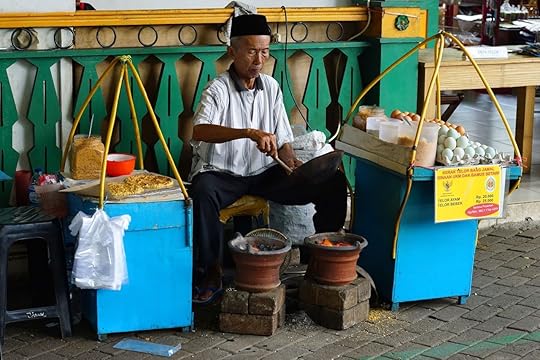
Photo: Joko SL/Shutterstock
There are many different versions of Betawi cuisines. There’s what’s served in fine-dining restaurants, and there’s food made by street food vendors, or pedagang kaki lima in Indonesian. Then there’s the cuisine served in Indonesian-themed restaurants. The prices at Indonesian-themed restaurants are normally more expensive than street food vendors but not as expensive as fine-dining restaurants. For authentic Betawi cuisine, locals almost always recommend you avoid fine-dining restaurants and order one of these 10 traditional Betawi dishes.
1. Kerak telor

Photo: Ariyani Tedjo/Shutterstock
Kerak telor is a spicy omelette dish. It’s made with glutinous rice that’s cooked with egg and seasoned with ginger, salt, sugar, and aromatic ginger. It’s typically served with dried shrimp, fried shallots, and serundeng (fried shredded coconut) on top. Back in the colonial era, kerak telor was considered a privileged food that was only served to the colonial government and upper-class Betawi. Now, it’s considered a cheap snack and can be purchased from street-food vendors.
2. Asinan Betawi

Photo: Albert AF/Shutterstock
This is the Betawi’s version of a salad. It’s made with sprouts, tofu, lettuce, cucumber, pickled cabbage, and peanuts. Asinan Betawi is topped with a refreshing peanut, vinegar, and chili dressing, and it’s served with kerupuk mie kuning (yellow noodle crackers), which come from the Dutch.
3. Soto Betawi

Photo: Ariyani Tedjo/Shutterstock
Soto Betawi is a soup made with beef, offals, fried potato, and tomato that’s cooked in a cow’s milk or coconut milk broth. It’s served with fried shallots, emping (fried chips made of Gnetum gnemon fruit), lime, cucumber pickles, and chili on the side. White rice normally accompanies the dish.
4. Nasi uduk

Photo: Ariyani Tedjo/Shutterstock
Popularly consumed for breakfast or dinner, nasi uduk (which translates to mixed rice) is rice cooked with coconut milk that’s seasoned with cinnamon, ginger, pepper, nutmeg, and lemongrass. This rice is commonly served alongside fried tofu, fried egg, chicken, dried tempe (fermented soybean cake), but it’s also served pre-packed in a banana leaf. Don’t forget to add chili, the must-have in almost every Indonesian dish.
5. Mie kangkung

Photo: Ariyani Tedjo/Shutterstock
Mie kangkung is a chicken and noodle soup made with kangkung (water spinach), shredded chicken, and yellow egg noodles. It’s served in a thick sauce made with tapioca and either chicken or beef broth that’s seasoned with garlic and sweet soy sauce. It’s typically served with a sprinkling of fried shallots on top and chili on the side, although some places add bean sprouts, meatballs, and mushrooms as well.
6. Kue rangi
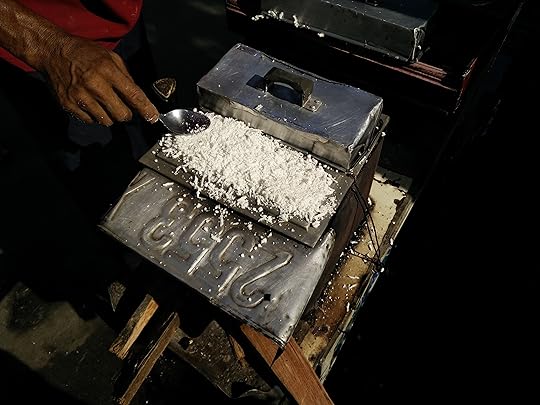
Photo: Tirta Ajie Irawan/Shutterstock
A traditional snack made from tapioca flour and shredded coconut. Kue means cake, and there are a number of different types. Kue rangi are spread thin and then cooked on a small steel griddle with a brown sugar and starch mix brushed on top. Order it from a streetside vendor and watch the process of making it yourself.
7. Kue cucur

Photo: Sudarsani Ida Ayu Putu/Shutterstock
You can find this dessert in almost every traditional market in Indonesia, and there are various versions from Malaysia and Thailand. The most popular, however, is the Betawi’s kue cucur. Made with rice flour and palm sugar, kue cucur tastes sweet, a tiny bit savory, and has crispy thin edges with a soft middle. It’s an important dish in traditional ceremonies.
8. Kue ape
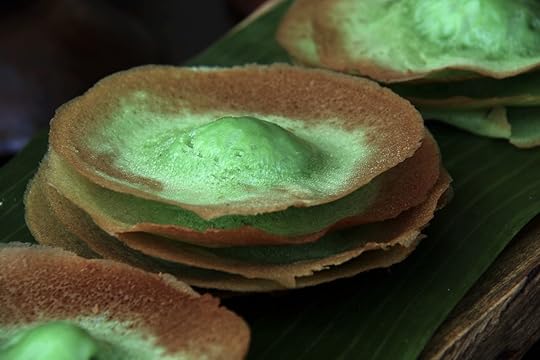
Photo: Ariyani Tedjo/Shutterstock
Kue ape is made with flour, rice flour, vanilla, coconut milk, sugar, and pandan, which gives the treat its aroma and green color. It’s cooked a frying pan to give it a round shape with crispy edges and a thick and soft middle. Kue ape are colloquially and famously known as booby cake because of the shape. You can typically find street stalls serving up kue ape in front of schools.
9. Kue cubit

Photo: Gandi Purwandi/Shutterstock
One of the most popular snacks in Jakarta, kue cubit is made with milk and flour as the main ingredients. The most popular version has chocolate sprinkles on top. The batter is baked on a steel molding that’s somewhat like a shallow cupcake tin, and it only takes a couple of minutes to cook. Kue cubits are similar to Dutch poffertjes in shape and color. They’re a popular small and quick snack (cubit means pinch, and refers to the small pinchable size).
10. Roti gambang

Photo: gilangtristiano/Shutterstock
Roti gambang is a traditional Betawi bread made with flour and brown sugar. While the British have scones with their tea, Indonesians have roti gambang. The name is inspired by the shape of Betawi’s traditional musical instrument, the gambang. 

More like this: 7 destinations you’d never expect to have amazing street food scenes
The post 10 authentic Indonesian dishes from Jakarta’s Betawi ethnic group appeared first on Matador Network.

Hagrid’s cottage is for rent
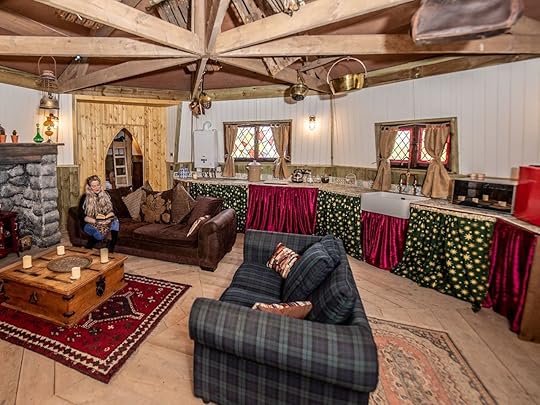
It doesn’t get any cozier than Hagrid’s cottage from Harry Potter, and now you can actually stay in this one-of-a-kind fantasy dwelling. At the North Shire on the edge of England’s North York Moors National Park, the Groundskeeper’s Cottage is now open for bookings.
Inspired by the film’s portrayal of the cottage, it features three circular, interlocking slate-roofed buildings, two with turrets and all with stained-glass windows. It also has a wooden door lit by a lantern, a spacious living room with a galley kitchen and dining area, roaring fireplace, and Hagrid-inspired furnishings like ropes, leather bags, lanterns, and old baskets. And unlike visitors to Hagrid’s actual cottage, you won’t have to force down a tray of rock cakes or endure Fang’s slobber.
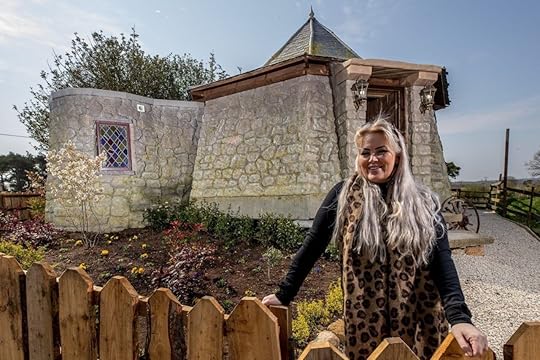
Photo: North Shire
Carol Cavendish, the owner, is a huge Harry Potter fan. She said that the books “have always been an important part of my life even after being diagnosed with dyslexia when I taught myself to read. They’ve also helped me through challenging times when I would turn to the Harry Potter and Lord of the Rings books for pure escapism. That’s why it is so fantastic to create an environment where others can also leave behind everyday life and step into their favorite storybook.”
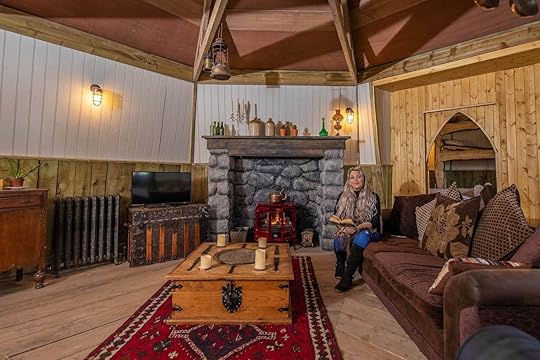
Photo: North Shire

Photo: North Shire/Facebook
The cottage is North Shire’s latest step in creating a fantasy world for visitors. In 2015, the area opened a Hobbit-hole inspired cottage, followed by a Green Dragon Cafe last year, inspired by the hobbit watering hole. The Groundskeeper’s Cottage sleeps up to six and is available to rent from $254 per night. 
H/T: BuzzFeed

More like this: The 7 best cities in the world for book lovers
The post You can spend the night in Hagrid’s cottage from Harry Potter appeared first on Matador Network.

Whitewater rafting in Zambia

Zambia is commonly referred to as the “Adventure Capital” of Africa, and whitewater rafting down the Zambezi River is the adventure of a lifetime. Getting their energy from the world’s largest waterfall, the rapids of the Zambezi are some of the most challenging — and most thrilling — you’ll find anywhere on earth. On the list of extreme sports, rafting the Zambezi River should be its own category.
Victoria Falls — the smoke that thunders

Photo: Vadim Petrakov/Shutterstock
The mighty Zambezi River flows 1,600 miles through six countries and, for much of its length, forms the border between Zambia and Zimbabwe. The river feeds Victoria Falls, the largest waterfall in the world, stretching an astounding mile across and reaching 2,900 feet high. Known locally as Mosi-oa-Tunya, or “the smoke that thunders,” Victoria Falls is the magnet that draws thousands of people to Zambia and Zimbabwe every year.
At Victoria Falls, the Zambezi River hurtles down with no sign of the bottom; all that’s visible is a boiling swirl of clouds pierced by a series of rainbows. It’s here, just after the Zambezi takes its awesome plunge down one of the Seven Natural Wonders of the World, that you begin your own descent down the fierce river.
There are 25 rapids to face going down the river, many of them being Class 5 rapids. This part of the Zambezi is set deep within sheer black cliffs with lush greenery and the African veld (grasslands) looking down on you. You can admire all this from a little red raft — when you dare to look up from the swirling water ahead of you. The magnitude of your surroundings reminds you just how small we are.
Feelings of exhilaration and panic

Photo: meunierd/Shutterstock
Adrenaline starts coursing through your body before you even tackle the first rapid. After asking what’s the worst thing that could happen and getting “death” as a response, you know you have to brace yourself for the journey to come. Your main focus will be trying to remember the safety instructions. These consist of listening to your river guide and keeping your feet pointed upwards if you do fall in — so that they don’t hook on rocks. Above all, you want to keep yourself in the raft. Keeping yourself in feels like an especially important goal after you see a crocodile slide into the calmer water not so far away. You’ll flit between the ambivalent feelings of exhilaration and panic, giving you an intense sensory thrill.
Class 5 rapids are the highest level rapids that are commercially available. Class 6 are the most difficult and dangerous rapids, so that puts the Zambezi rapids into perspective. At one point you will come across a Class 6 rapid. Everyone has to get out of the raft and walk along the side of the cliff while watching as the guides conquer the rapids alone. It’s a spectacular sight to see but — unless you know what you’re doing — not an enviable task.
The guides — nerves of steel and a sense of humor

Photo: Bundu Adventures/Facebook
Our river guide was Doc, a shortened version of his nickname, the River Doctor. Doc was given this name after spending many years as a river guide on the Zambezi and having trained many of the guides who still operate today. He left life on the river after losing a friend to it. Doc has a gammy leg and walks with a limp since he tried to rescue his friend who was a kayaker on the whitewater rafting trips. The kayak flipped over, and he was unable to flip himself back up.
This was a tragic wake-up to the dangers of the river. Yet Doc’s easy smile, quiet confidence, and lightheartedness set us at ease — even after seeing his photographs of a client whose foot was bitten by a crocodile. Doc was able to convince his old company to let him be our guide for the day. After his stories, I probably would not have done it with anyone else. Doc refers to river rafting on the Zambezi as “the Everest of whitewater rafting.”
The guides from the three other rafts exuded the same confidence and calmness as Doc. They would disrupt moments of fear and panic with jokes and silliness. Many of the guides go by their nicknames, one being Potato. I’m not sure about any resemblance to a potato, but he got lots of laughs. Even if the adventure is an unpredictable one, and you are mostly at the mercy of the river, you feel safe knowing that you are in the hands of skilled guides who have years of experience. You are also protected by the kayakers who follow alongside you to get you out of the water if you do go in — which, more likely than not, you will.
Taking the Plunge — the Washing Machine and the Terminator
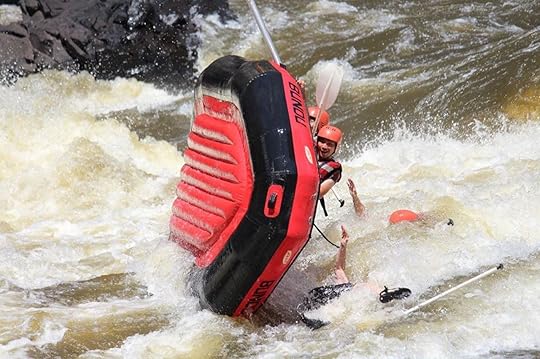
Photo: Bundu Adventures/Facebook
The rapids to look out for are the Washing Machine and the Terminator. With those names, there’s not much need for an explanation. These two notorious rapids come up near the end of the rafting trip. They were mentioned at the beginning of the trip, but nobody paid them much attention as we were more focused on the rapids being directly faced. There was no hiding from them when we saw them approaching. At this point, Doc told us all to stop trying to paddle and to get onto the floor of the raft. The guides were the only ones paddling and steering in each of the rafts. Not one person in our group stayed in the raft going through those two rapids, except for Doc. If you managed to hold on through the Washing Machine, you were going to get tipped out at the Terminator.
I fell out going through the Washing Machine. Trying to come up for air I hit my head on something; assuming someone had fallen on top of me, I moved to the side to try again but hit my head a second time. I very quickly realized I was caught under the raft and the rapids kept pushing us in the same direction. It felt like I was stuck under there for ages, and the thought that those moments could be my last was very real. All I could do was hit the underside of the raft.
The ordeal didn’t last too long, at least not as long as it felt, before a hand grabbed onto my life jacket to pull me out from underneath and back onto the raft. The guides and the kayakers move fast, and you are back in the raft within minutes, filled with relief. We were all a bit shaken, some people missing a shoe and others a bit bruised or bloody from hitting rocks, but ready to take on the last few rapids to get to the well-deserved beer.
Slowing down to take in the view — and watch out for crocodiles
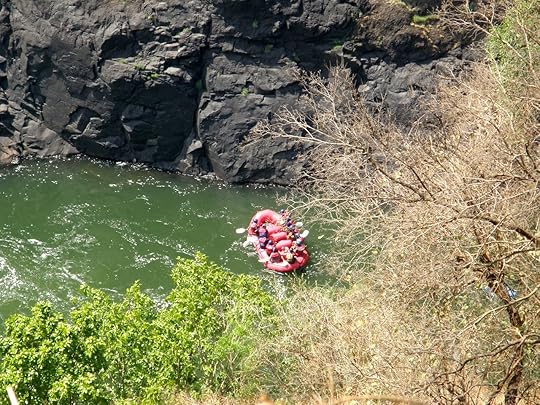
Photo: p.lourdas/Shutterstock
You’re not speeding down the river and facing the rapids for the whole trip. There are calmer moments on the water when you can take in your surroundings. You can also slow down your heart rate and take a little dip in the river while swimming alongside the boat if you’re sure there are no crocodiles skulking about.
It’s terrifying and invigorating at the same time. If you get the chance to go down the “adrenaline river,” you have to take it.
When to go and with whom

Photo: Safari Par Excellence/Facebook
It’s best to go when the water levels are lower, from August to late December. When the water is higher, you miss out the first nine or 10 rapids as it’s too dangerous, but you still pay the full day price. Between March and June the water levels are too high and the whole river is deemed unsafe.
Bundu Adventures and Safari Par Excellence are both good companies to go with, with their prices being very similar. All the guides are fully qualified and have many years of experience; you can feel confident that you’re in good hands.
Canoe trips on the Zambezi
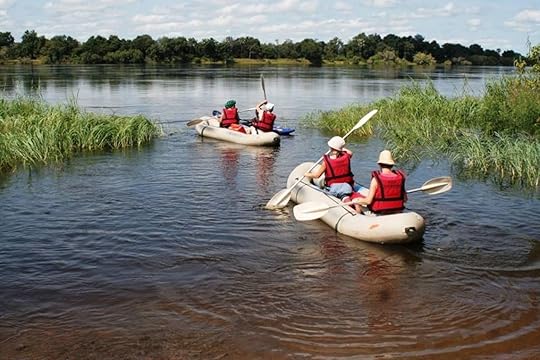
Photo: Bundu Adventures/Facebook
If the whitewater rafting doesn’t sound quite like something you would be interested in trying, but you would like to get out onto the Zambezi River, the same whitewater companies offer alternative ways to descend the river. Canoe trips, for example, are much more relaxed and allow you to focus on taking in the sights of the animals around you and on the natural wonder that Zambia and Zimbabwe are renowned for.
Look out for the river god known as Nyami Nyami, a giant dragon with the body of a serpent and the head of a fish. He is one of the most important gods of the Tonga people. That said, you’ll probably only come across him attached to a necklace being sold in town or around Victoria Falls. 

More like this: Want a real resolution? Go ultrarunning in South Africa this year
The post Rafting the Zambezi on the scariest whitewater rapids in the world appeared first on Matador Network.

Disney bans smoking, large strollers

Pretty much everywhere is smoke-free these days, from airplanes to restaurants, and now we can add Disney World to the list. Starting on May 1, smoking will be banned at all Disney parks, including Walt Disney World, Disneyland, the various water parks, and Downtown Disney in California. Now if smokers or e-cigarette users want to light up, they must do so in special areas located outside the park entry points or in specific zones at Disney Resort hotels. The rule does not, however, apply to Disneyland Paris, where smoking is still permitted in designated smoking areas.
According to Disney, “the removal of smoking areas is intended to provide a more enjoyable experience for everyone who visits.”
Disney is also restricting the size of stroller wagons, to ease the flow of park traffic. Also starting on May 1st, all forms of stroller wagons will be prohibited from theme and water parks. According to the new guidelines, they can be no larger than 31” wide and 52” long. “The reduction of stroller sizes,” they said, “is intended to ease guest flow and reduce congestion, making the park experience more enjoyable for everyone who visits. Many strollers, including many double jogging strollers, fit within these guidelines.” Strollers of an appropriate size will be made available at the parks for rent for those guests who require them. 
H/T: Newsround

More like this: 7 epic family trips that aren’t Disney World
The post Disney bans smoking and large strollers in its parks appeared first on Matador Network.

US cities you can drink in public
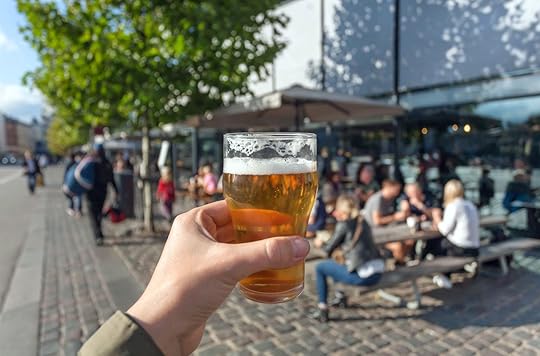
Sometimes the itch to drink outside is so strong that not even a fenced-in patio can satiate the urge. For better or worse, the vast majority of municipalities in the United States have forbidden the practice of drinking on the street. But a few stalwarts remain standing for the casual public consumer of cold ones. These nine US cities allow you to break through the confines and stretch your legs with a walk about the neighborhood, drink in hand.
1. Canton, Ohio

Photo: Henryk Sadura/Shutterstock
You can stuff a sixer into your rust belt in Canton, Ohio, as of June 3, 2016. On that historic day, the city council approved what they dubbed the “Designated Outdoor Refreshment Area,” which, in addition to letting visitors to the city’s downtown core crack one open and enjoy it, gets the award for coolest name ever given to a designated drinking space. Other Ohio cities including Toledo and Middletown have similar policies though Canton has set the bar by concentrating it in a way that accentuates the already lively bar scene downtown. Canton’s law is especially useful nowadays as NFL fans visiting the city for its Pro Football Hall of Fame may want to raise a toast to a bygone era when the Super Bowl wasn’t won by the same team every year.
2. Butte, Montana

Photo: Christopher Boswell/Shutterstock
In Butte, you can freely imbibe on the streets provided that you abide by Montana’s 2:00 AM last call. Drinking in public is prohibited between the hours of 2:00 and 8:00 AM, but outside of general sleeping hours, it’s no holds barred when it comes to having a nipper in front of your fellow pedestrians. Should you find yourself strolling down Park Street and in need of something to keep your hand occupied, the beverage of choice should be a Montucky Cold Snack. If someone were to call and ask what you’re doing, it sounds much classier to tell them you’re having a quick snack than to reveal that you’re drinking on a street corner in the middle of the afternoon.
3. Kansas City, Missouri

Photo: Suzanne C. Grim/Shutterstock
The Power and Light District should be your first stop upon arriving in the City of Fountains. This entertainment and bar district bills itself as “A Little Slice of Ireland in Kansas City,” but it takes it one step further than Ireland by allowing open containers within the confines of the neighborhood. The catch is that you have to drink out of a plastic cup, but it’s all good because the high density of frat boys and high-pitched squeals spilling out of the area’s pubs will already have you feeling as though you’re at a college house party.
4. Savannah, Georgia

Photo: Sean Pavone/Shutterstock
You’re allowed one alcoholic drink in a plastic cup up to 16 ounces in Savannah’s Historic District. Should you forget to bring one from home, the neighborhood’s pubs will happily provide you with one, which explains why nearly everyone you pass on the street in the evenings doesn’t seem to be in any hurry to get wherever it is that they’re going. Many a beer-side conversation happens out in the open here, and it’s become such a selling point that the city actually raises a giant plastic cup instead of a crystal ball for the annual New Year’s Eve countdown. This epic tradition is appropriately titled “Up The Cup.”
5. Clark County, Nevada
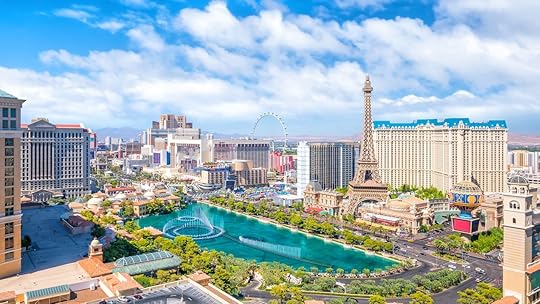
Photo: f11photo/Shutterstock
Drinking on the Las Vegas Strip is no secret and certainly nothing new. What you might not know, however, is that the ability to imbibe in the open actually extends to the whole of Clark County, so there’s no need to toss your cocktail should you decide to meander past the strip itself. Just don’t pop the cap open until you’ve walked at least 1,000 feet from the point of purchase — drinking in front of the liquor store is, as The Hangover’s Alan Garner would say, “frowned upon.”
6. Fredericksburg, Texas
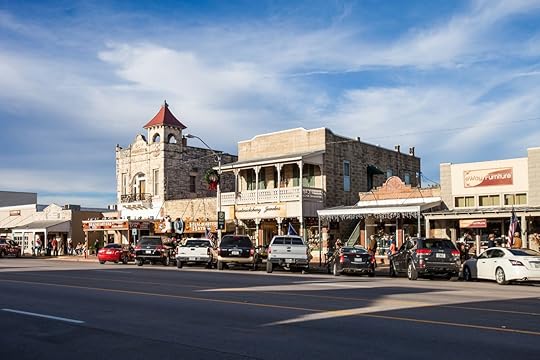
Photo: Moab Republic/Shutterstock
In an apparent middle finger to the nearby dry counties of Borden and Hemphill, there’s no need to wait until you get back to the hotel to pop the cork in Fredricksburg, Texas. Beer and wine are allowed in the Main Street shopping district of this central Texas city. This seems especially appropriate given that Fredricksburg is the heart of Texas wine country, a major pull for visitors to the city that makes it highly likely that your water bottle is already full of fermented grapes anyway. It might as well not be a punishable offense.
7. New Orleans, Louisiana
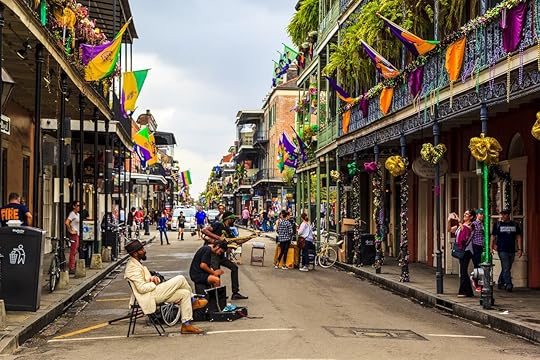
Photo: GTS Productions/Shutterstock
No visit to New Orleans is complete without a stumble from Bourbon Street back to your hotel. Should the necessary time of departure sneak up on you before you can finish that Sazerac, you’ll have a second chance — as long as you do it before you leave the confines of the French Quarter. Open containers are permitted within this specific area but nowhere else. You can’t drink out of a glass container, making that bottle of Abita Amber a no-go, but by the time you leave the pubs you don’t need to be carrying anything that could penetrate the skin anyway.
8. Memphis, Tennessee

Photo: Sean Pavone/Shutterstock
Visitors flocking to Nashville for a free-wheeling weekend of partying on Music Row have been doing it wrong all these years. Nashville’s music chops are indisputable, but Beale Street in Memphis actually parties much harder and has a more booze-friendly approach to moving between drinking establishments. The Beale Street Entertainment District, in the city’s downtown, is the only exclusion from Tennessee’s strict open container law. Here you can take a to-go cup from one pub and drink it on the way to the next, and the district has a bunch of live music bars and even hosts its own annual music festival, so it’s really a win-win no matter how you look at it.
9. Erie, Pennsylvania
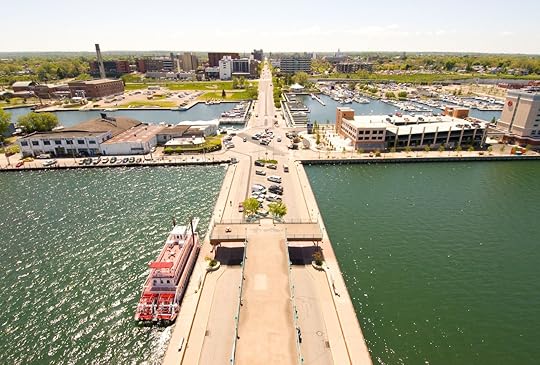
Photo: Zack Frank/Shutterstock
Also mistaken are the songwriters writing crooning odes to Philly. They should instead focus their sappy tunes on Erie, an eastern Pennsylvania city where one can actually sit outside a bar on State Street and pen lyrics while overlooking the city skyline. The notable absence of an open container law in Erie puts the town among the most booze-tolerant in the entire country — you can have a drink in a public park as well as on the walk to get there, as long as you’re not bothering anybody else. 

More like this: Can you drink your own alcohol on a flight?
The post 9 US cities where you can drink in the street appeared first on Matador Network.

Matador Network's Blog
- Matador Network's profile
- 6 followers



